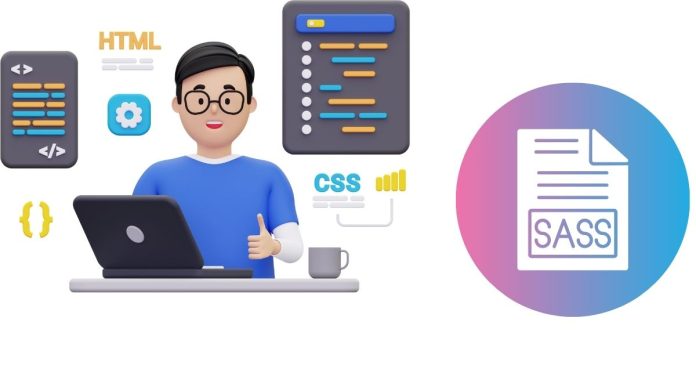When working with modern web development, you’ve likely encountered Sass and SCSS, two powerful tools for writing maintainable and efficient CSS. But what’s the difference between them? While often used interchangeably, SCSS and Sass have distinct syntaxes and use cases that cater to different preferences and needs.
This article explores the differences, similarities, and when to use each.
What are Sass and SCSS?
Sass (Syntactically Awesome Stylesheets) is a CSS preprocessor that extends CSS with additional features like variables, nested rules, mixins, and more. It simplifies and enhances the way stylesheets are written, organized, and maintained.
Sass offers two syntaxes:
- Sass Syntax (Indentation-Based)
- SCSS Syntax (CSS-Compatible)
Key Differences Between SCSS and Sass
| Feature | SCSS (Sassy CSS) | Sass (Indented Syntax) |
|---|---|---|
| File Extension | .scss |
.sass |
| Syntax Style | CSS-like syntax with braces {} and semicolons ;. |
Indentation-based syntax without braces or semicolons. |
| Learning Curve | Easy for those familiar with CSS. | Slightly steeper learning curve due to unique syntax. |
| CSS Compatibility | Fully compatible with CSS. Any valid CSS file is a valid SCSS file. | Not directly compatible with CSS. |
| Readability | Closer to traditional CSS syntax. | Concise and clean, but less familiar to CSS developers. |
| Popularity | More widely used and recommended in modern projects. | Less common but preferred by some developers for its simplicity. |
SCSS Syntax
SCSS (Sassy CSS) is essentially an extension of CSS. It allows you to use all the features of Sass while maintaining a familiar CSS-like syntax.
Example:
$primary-color: #3498db;
body {
font-family: Arial, sans-serif;
background-color: $primary-color;
h1 {
color: darken($primary-color, 10%);
}
}
Key Features:
- Uses curly braces
{}to group styles. - Semicolons
;are required to separate rules. - Easy to transition from regular CSS.
Sass Syntax
Sass (Indented Syntax) uses a more concise, whitespace-sensitive format. It omits braces and semicolons, relying on indentation and newlines to structure styles.
Example:
$primary-color: #3498db
body
font-family: Arial, sans-serif
background-color: $primary-color
h1
color: darken($primary-color, 10%)
Key Features:
- No braces
{}or semicolons;. - Relies on indentation to define nesting.
- Results in cleaner and more minimalistic code, but requires stricter formatting.
Similarities Between SCSS and Sass
- Functionality: Both syntaxes support the full range of Sass features, including variables, nesting, mixins, inheritance, and operators.
- Compilation: Both require a Sass compiler to convert the code into standard CSS.
- Output: Whether you write in SCSS or Sass, the resulting CSS is the same.
When to Use SCSS
- Familiarity with CSS: If you’re transitioning from CSS, SCSS feels natural because it’s an extension of CSS.
- Team Projects: SCSS is more widely adopted, so it’s easier to collaborate with developers already familiar with the syntax.
- Legacy Code: Many modern tools, libraries, and frameworks are built with SCSS support in mind.
When to Use Sass
- Minimalistic Code: If you prefer a cleaner, more concise syntax, Sass might appeal to you.
- Personal Projects: For individual projects where team conventions aren’t a concern, you can leverage Sass’s simpler format.
- Preference for Indentation: Developers coming from Python or other whitespace-sensitive languages may find Sass more intuitive.
How to Choose Between SCSS and Sass
- Project Requirements: Check if your team or framework has a preferred syntax.
- Personal Preference: Choose the syntax that aligns with your coding style.
- Ease of Learning: Beginners may find SCSS easier to pick up due to its similarity to CSS.
- Future Proofing: SCSS is generally the safer choice for compatibility with tools and frameworks.
While both SCSS and Sass are part of the same ecosystem and offer identical functionality, the choice between them boils down to syntax preference and project requirements. SCSS, with its CSS-like syntax, is the most popular choice for modern web development. Sass, on the other hand, offers a cleaner, indentation-based syntax that appeals to developers who prefer minimalism.
Ultimately, both are powerful tools that can greatly improve your CSS workflow, making your stylesheets more maintainable and feature-rich. Choose the syntax that best fits your needs and enjoy the benefits of Sass in your projects!


